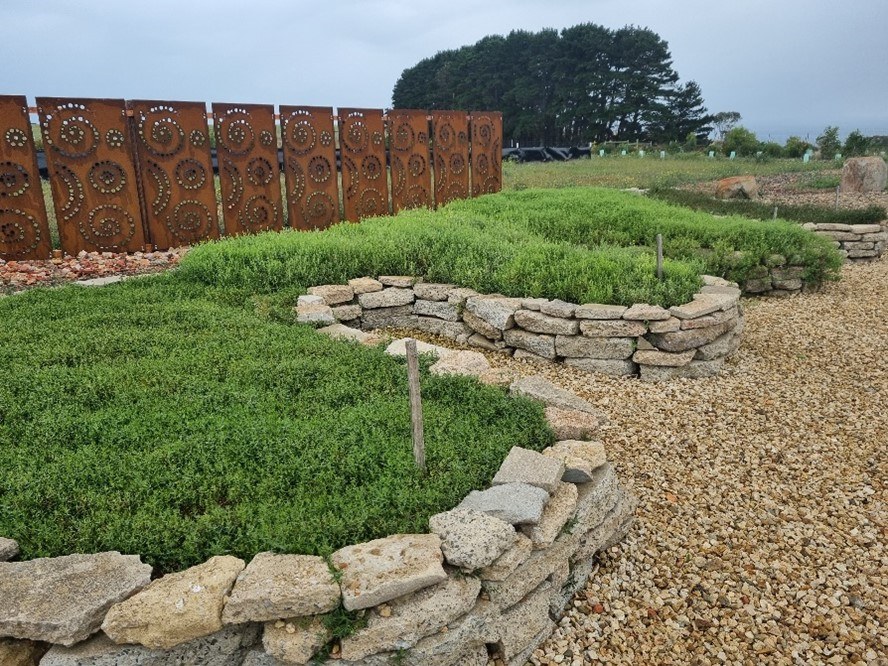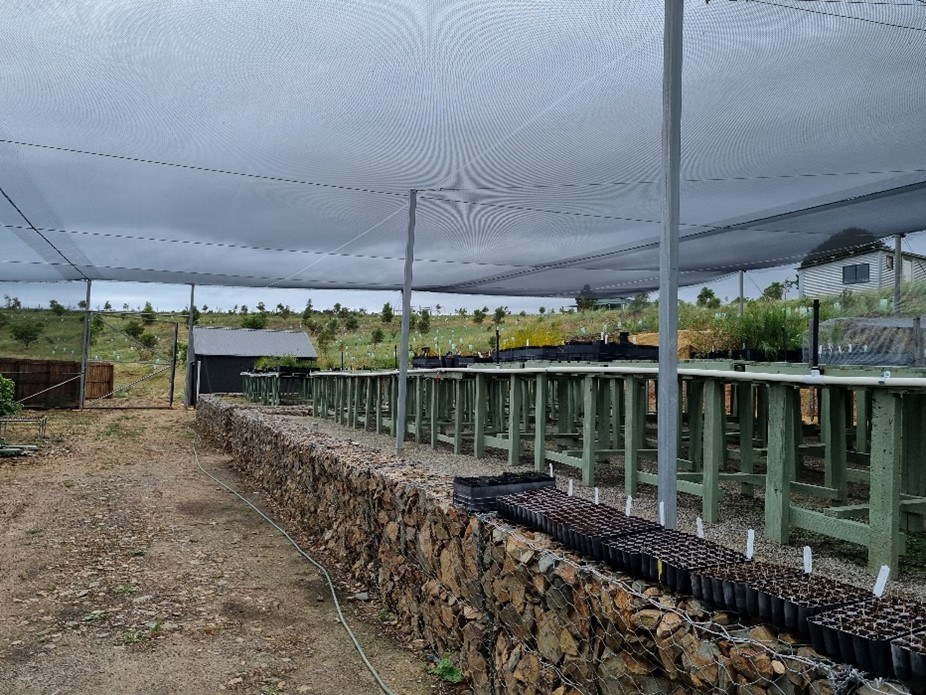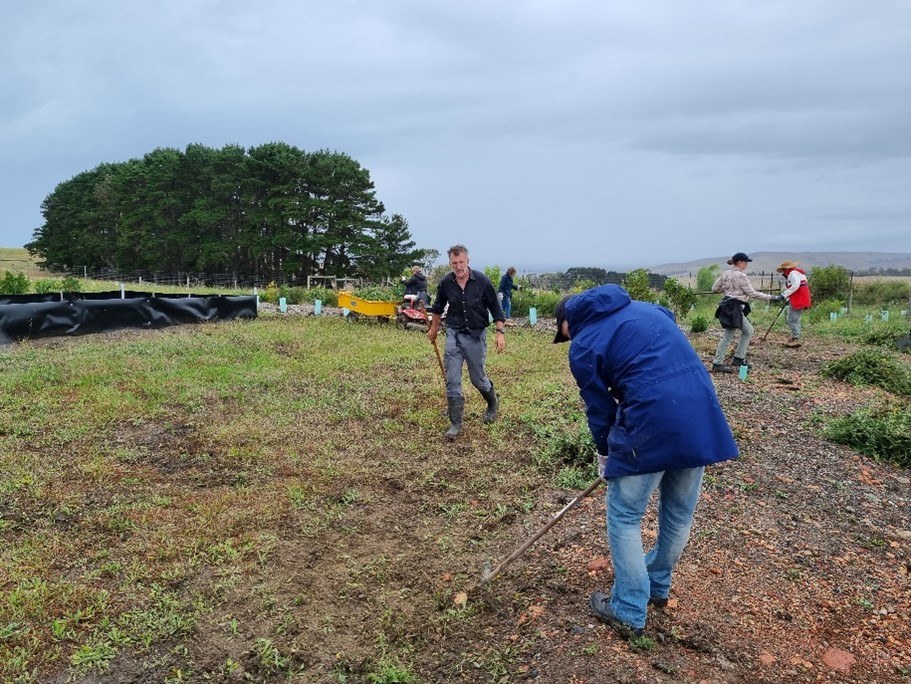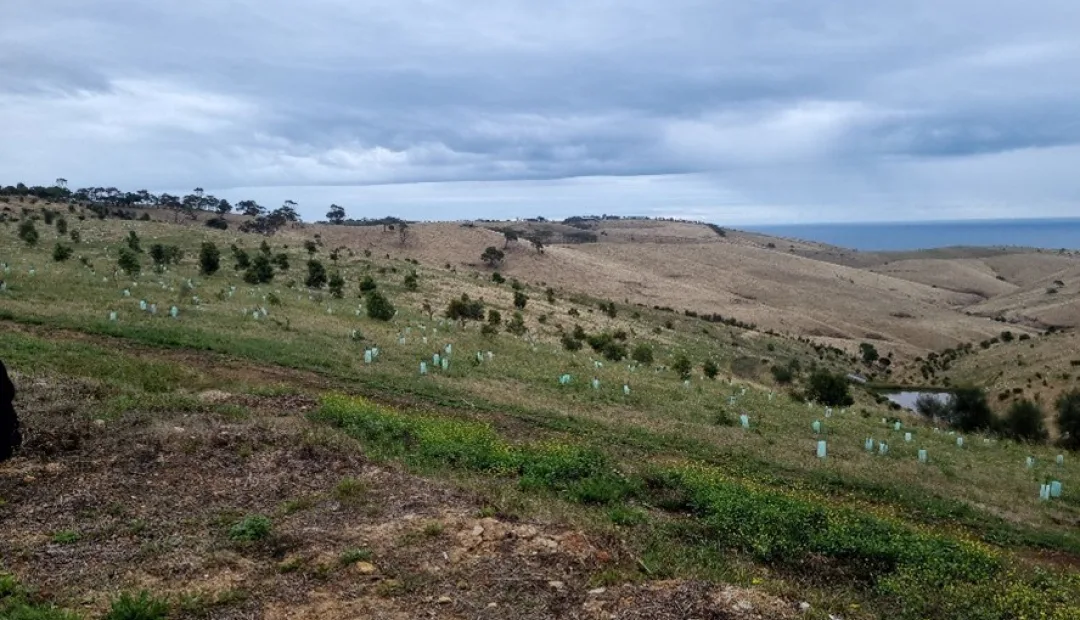Published:
Author:

The project has:
- established a nursery to raise native plant seedlings (grasses, shrubs and trees) and a rare seed orchard
- carried out substantial revegetation of the property and supplied seedlings to other land managers
- carried out bird, lepidoptera, carbon and flora & fauna baseline surveys
- demonstrated the use of recycled materials in farm tracks, nursery benches, walls and other structures
- provided education, volunteering opportunities and promoted rewilding to a range of different groups (eg Operation Flinders) and 80 school groups so far
- trialed carbon assessment methodologies
- engaged actively with Aboriginal people in many aspects of the work being carried out.

In the 2023–24 year, the aim is to raise 30,000 seedlings, spanning 105 plant species. Challenges being faced include liverwort (Bryophyta), which is a problematic actively spreading nursery weed.
In practical terms our rewilding workover the next 10 years involves linking up our 2 remnant stands of Pink Gums Eucalyptus fasciculosa and their vegetation associations to rebuild much-needed contiguous Pink Gum/Drooping Sheoak Allocasuarina verticillata woodland over dense understorey on the upper slopes, grading to Blue Gum E leucoxylon ssp leucoxylon Woodlands on the lower slopes and some Red Gum (E camaldulensis ssp camaldulensis) woodlands in the lowest, wettest areas. The opportunity also exists for Rough-bark Manna Gums E viminales ssp viminales on the south facing cooler micro-climates slopes of the site (Koala habitat) and establishing Mallee Box woodland on the hilltops as part of reestablishment of more of this historical woodland that existed along the western part of the Fleurieu Peninsula.

Biodiversity and carbon sequestration benefits are already being achieved on the property and at other locations supplied with seedlings and seeds. Educational and wellbeing results are being generated and the value of a demonstration site, to show what can be done, is adding to the positive influence the project is creating.
When fully restored, it is anticipated Forktree will provide habitat for many native species, including the following rare and threatened species (EPBC[1] or NPW[2] rare or threatened species/communities) endemic to the region:
Species name |
Common name |
EPBC rating |
NPW rating |
Pteropus poliocephalus |
Grey-headed Flying Fox |
Vulnerable |
Rare |
Zanda funerea whiteae |
Yellow-tailed Black Cockatoo |
Vulnerable |
Vulnerable |
Actitis hypoleucos |
Common Sandpiper |
Vulnerable |
Rare |
Eucalyptus fasciculosa |
Pink Gum |
Vulnerable |
Rare |
Falco peregrinus Macropus |
Peregrine Falcon |
Vulnerable |
Rare |
Falcunculus frontatus |
Crested Shrike-tit |
Vulnerable |
Rare |
Myiagra inquieta |
Restless Flycatcher |
Vulnerable |
Rare |
Neophema elegans |
Elegant Parrot |
Vulnerable |
Rare |
Xanthorrhoea semiplana ssp tateana |
Tate's Grasstree |
Vulnerable |
Rare |
[1] Environment Protection and Biodiversity Conservation Act 1999
[2] National Parks and Wildlife Act 1972
The team is led by Tim Jarvis AM, Global Ambassador to international sustainability NGO WWF. Elizabeth Blumer provides education and wellbeing expertise. The nursery manager is Ida Moore. An advisory panel assists the team and a range of corporate, government and educational organisations provide generous sponsorship.



